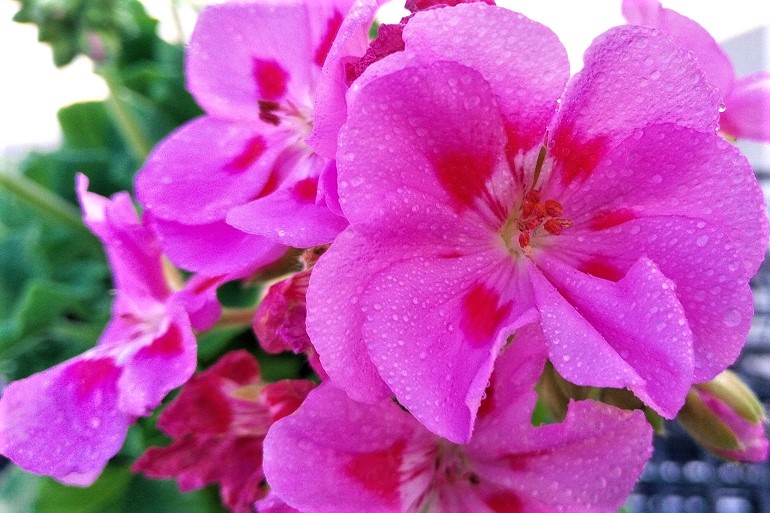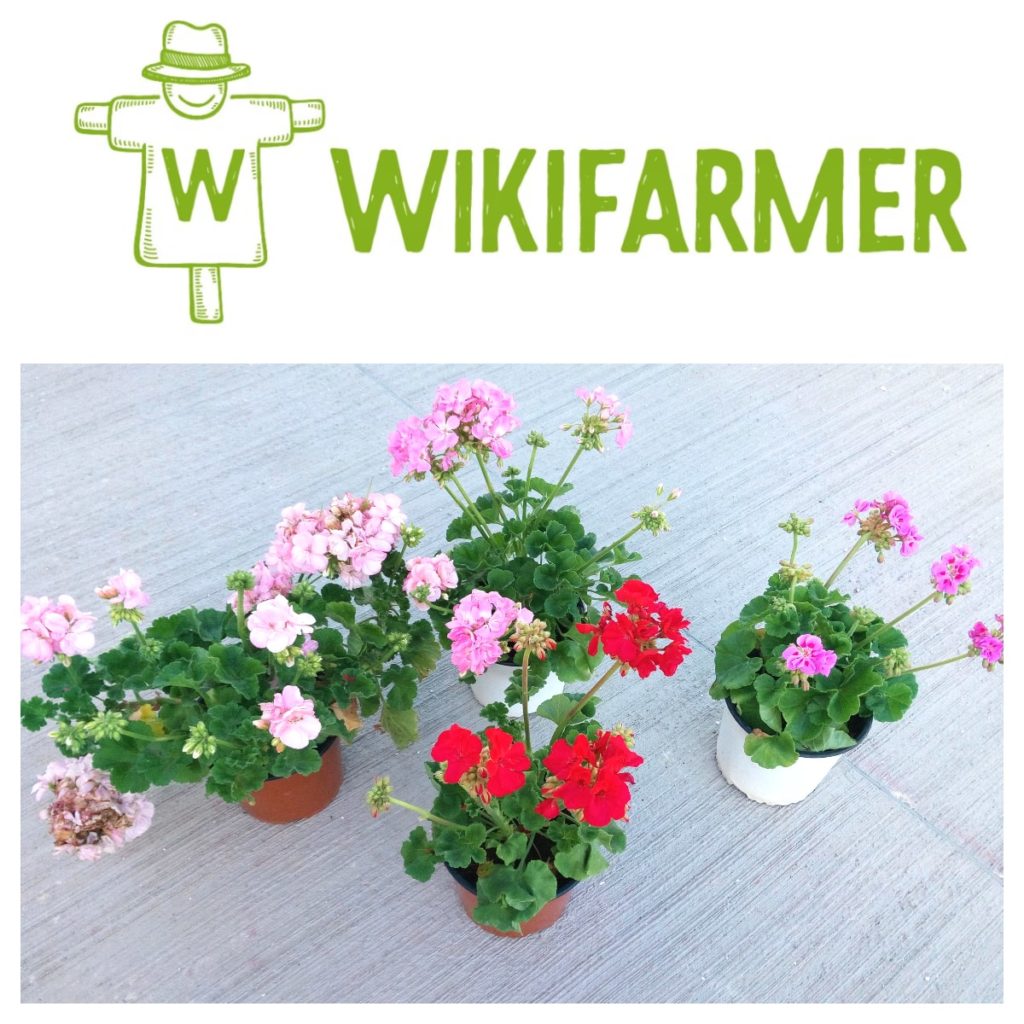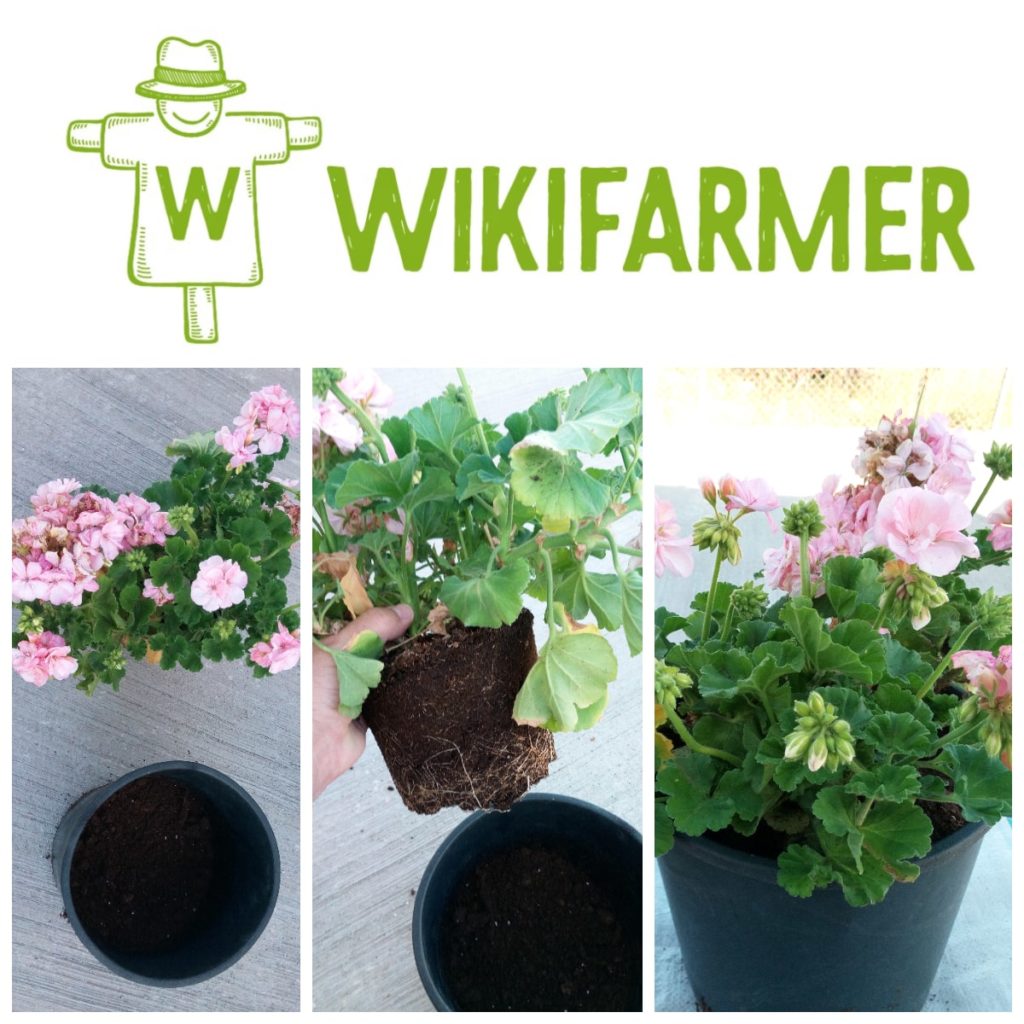Geranium in pots

This post is also available in:
This post is also available in:
![]() Français (French)
Français (French) ![]() Deutsch (German)
Deutsch (German) ![]() Nederlands (Dutch)
Nederlands (Dutch) ![]() हिन्दी (Hindi)
हिन्दी (Hindi) ![]() العربية (Arabic)
العربية (Arabic) ![]() 简体中文 (Chinese (Simplified))
简体中文 (Chinese (Simplified)) ![]() Italiano (Italian)
Italiano (Italian) ![]() 한국어 (Korean)
한국어 (Korean)
If we want our balcony or terrace to look fresh and colorful with perennial flowers that will bloom and grow almost all year round, the first plant that comes to mind is the all-time classic geraniums!
Geraniums are perennial plants of the genus Geranium. They should not be confused with pelargonium (Pelargonium spp.), which are usually less cold-resistant annual plants. In both species (geraniums and pelargoniums), we observe five petals in their flowers. However, in pelargoniums, the two upper petals have a different shape and size from the rest, creating an asymmetry. In contrast, in geraniums, we observe a relative symmetry of all five petals. Another difference is that geraniums have a more upright growth due to their small height and canopy width than pelargoniums.
Geranium is one of the most adaptative plants and can add color in pots, hanging gardens, and terraces during the summer season. Do not underestimate their durability over time. There are cases where geraniums have lived for 25 years or more when they receive proper care. In fact, geranium is one of the few species to grow better in pots than in soil. The benefit of them growing into pots is that:
- We can move them around, even put them indoors during the winter season to protect them from strong winds that can scatter the petals of the flowers and injure the plant.
- They do not have to compete with weeds for water, nutrients, and access to sunlight.
- Enemies, like snails, are less abundant, so minor damage to the plants from their activities occurs.
- We can control more efficiently the soil moisture by watering.
However, high soil moisture can cause asphyxia and root rot. Over-watering is the most common cause of geraniums senescence. As a result, we need to water the plants only when the soil of the pot is completely dry (you can feel it with your hand). It is also essential to apply the water directly in the soil, where the roots grow, not at the leaves.
But now, let’s see the steps we do as soon as we buy our fresh geraniums from the nursery (or from any flower shop).
 Buy and transplant a Geranium plant in a pot
Buy and transplant a Geranium plant in a pot
Apart from all the other advantages, geraniums are also relatively cheap, as we bought these four pots for only 12 euros (14 dollars).
We first need to transplant the geraniums into larger pots, ideally made from terracotta.
Unlike plastic, this material has pores and helps decrease excessive soil moisture that can be harmful to our plants. Regardless of its material, we need to open holes at the bottom of the pot allowing drainage of the extra water within minutes.
To reduce the risk of root rot, we avoid using soil rich in peat, as peat retains water. Instead, we choose potting soil that provides good drainage and mix it with river sand.
Immediately after transplanting our plants to their new pots, we need to remove any withered flowers by cutting the stem that holds them from the first node (branching point).

This process is necessary, as it helps the plant devote all its energy, nutrients, and water to forming young buds that will surprise us very soon with their appearance, vigorousness, and colors. Apart from deadheading, we need to remove shoots with brown and wilting leaves. When the canopy of the plant is very dense we might need to thin it out a bit. Unfortunately, in this case, it is necessary to remove plant material that, even though it is healthy and green, prevents air and sunlight from reaching the inside of the plant’s canopy. To induce the formation of new shoots and flowers and keep our plants fresh and colorful, we need to perform such pruning yearly, at least in spring and in autumn.
After we have completed transplanting and pruning our geraniums, it is necessary to place the pots in a spot on our balcony where sunlight is available for at least 6 hours. Geraniums can grow well in the shade, but under these conditions, they will give priority to prioritize form leaves instead of flowers. The flowers will be fewer and not as impressive.
Nutrient requirements and fertilization of Geraniums
Despite their generally resistant nature, geraniums need fertilization from spring until autumn, especially when they grow in pots. Ideally, we could enrich the soil monthly with a soluble fertilizer NPK 7-7-7 or 10-10-10 that contains Fe, Cu, Mn, and Zn. We can find the exact dosage of each fertilizer reported by the manufacturer on the product’s label. Usually, we dissolve a cap (of the fertilizer powder) in 3 liters of water. We add the final solution directly to the soil, avoiding wetting the leaves of the plant. Alternatively, once a month, we can add 20-40 grams of a simple granular soil fertilizer for fruits and vegetables and water immediately afterward, as it must be dissolved with water to release the nutrients it contains. In this case, we need to add Iron and Copper separately, using another product.
During and after the Winter
We need to keep in mind to change the position of our pots during autumn and before winter to protect them from strong winds, snow, or frost. In regions or countries where the temperatures drop below 5 degrees Celsius (41 degrees Fahrenheit), the plants can be covered or placed inside the house to survive through the winter.
As soon as the last frost has passed, we can transfer our plants back to the sunny spot of our terrace. The transition needs to happen gradually to avoid shocking the plants by the sudden change of temperature. For example, we can leave them outside for a short period the first days, and then for longer in the following days. Finally, after removing the dry and unnecessary shoots, we can start fertilizing the plants again to help them produce new vegetation and flowers.








































































